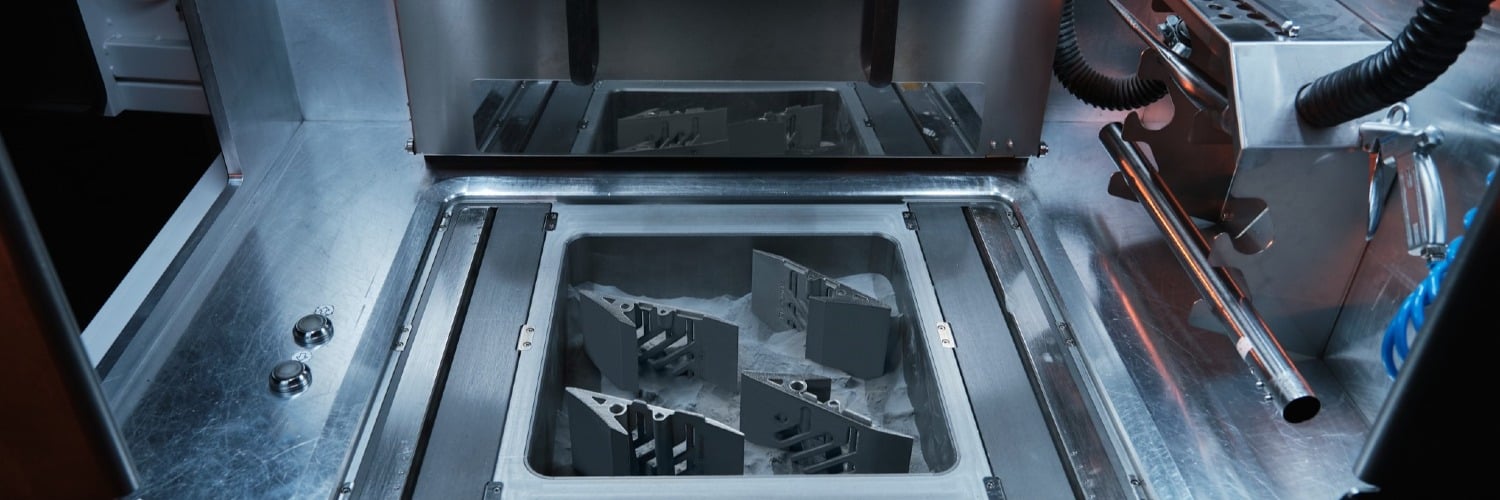As the manufacturing industry continues to accelerate, the introduction and development of new and...
So you already know about metal 3D printing, but you want to find out more about the pros and cons of the leading technology — laser powder bed fusion (LPBF). We’re here to make it clear.
Dominating the additive manufacturing industry, LPBF presents many opportunities for companies in various sectors. Keep reading to find out more about the advantages LPBF has to offer.
What Is Laser Powder Bed Fusion?
LPBF is a technology where a high-power laser is used as a heat source to selectively melt and fuse metal powder onto a bed, building a part layer by layer. After extensive research and investment, it’s widely considered the most utilised technology in the metal 3D printing industry.
While popularity in itself is a benefit, the advantages of LPBF don’t end there.
Can Create Complex Parts With Precise Geometries
By utilising a laser to fuse metal powder to create a part layer by layer, it is possible to produce parts with very high accuracy and resolution. The technology has the capability to produce parts with dimensional tolerances of +/- 0.2mm, similar to metal injection moulding.
Because of this, LPBF lends itself to printing intricate parts such as nozzles, valve components, rotors, impellers, heat exchangers and more. LPBF can manufacture these parts cost competitively, without the need for complex machining operations.
Improves Lead Times
Compared to other metal 3D printing technologies, LPBF typically has a slower build rate. However, productivity can be significantly improved through the use of multiple laser configurations, which is a common feature on larger LPBF printers.
The only mandatory post-processing steps required when using LPBF are removing the build platform and metal support structures, making it a much quicker option when compared to BJT and FDM technologies, which require debinding and sintering after printing. DED also requires a significant amount of post-processing due to the low resolution of the parts produced. When taking this into account, LPBF is still one of the most time-efficient options for small batch production.
But why are shorter lead times so crucial for businesses? Equipment downtime can cost companies millions every year, particularly when spare parts for critical equipment are not available. By reducing the lead-time of spare part production, you can also minimise the amount of inventory required for the given part.
Provides Flexibility
When improving operations and creating efficiencies, LPBF delivers the flexibility that companies may need. As with all additive manufacturing technologies, LBPF can produce multiple variations of a design at the same time, without increasing manufacturing costs. This means that it’s easier to produce customised parts, accelerate the product development life cycle and ultimately increase the agility of manufacturing lines.
Compatible With a Wide Range of Materials
LPBF can work with any material that can be turned into a powder, including titanium, stainless steel, tool steel, nickel alloys or aluminium.
LPBF can produce parts with excellent mechanical properties, as well as build objects that display near isotropic characteristics. This is the main reason why LPBF is so popular and is why it is commonly used for the production of high-performance parts such as turbine components.
Helps Reduce Wastage
If you’re concerned with the sustainability of LPBF, then don’t worry; the ability to recycle non-sintered metal powder after printing reduces material wastage, making it more environmentally friendly than traditional manufacturing methods. This also helps to keep costs down.
Not only this but with LPBF it is possible to make parts with shapes and features unachievable with other manufacturing methods. Therefore, parts can be redesigned to minimise the amount of material used and wastage incurred.
Industries Harnessing the Benefits of LPBF
LPBF can transform heavy industry by manufacturing and optimising spare parts. Offering many advantages over traditional manufacturing techniques, metal 3D printing can reduce lead times, increase efficiencies and improve the overall performance of operations.
Aerospace is an industry that has capitalised on the benefits of LPBF for many years. As LPBF naturally lends itself to producing complex, lightweight parts, it is commonly used to print turbine engine blades, brackets, fuel nozzles and more.
The automotive industry is another sector that has been increasingly adopting LPBF for the production of small in-vehicle parts, such as piston heads, transmission couplings and fuel injection nozzles.
In terms of heavy industry sectors, oil & gas and power generation are beginning to utilise metal 3D printing. Similar to the industries previously mentioned, it is possible to print turbine blades, impellers and nozzles using high-performance materials such as Inconel and cobalt chrome.
Looking to Find Out More About MEtal 3D Printing?
Then you’ve come to the right place. If you’re looking to take a deeper dive into metal 3D printing, the technologies, applications and processes, then our handy guide can give you all the details. Simply download by clicking the link below.


